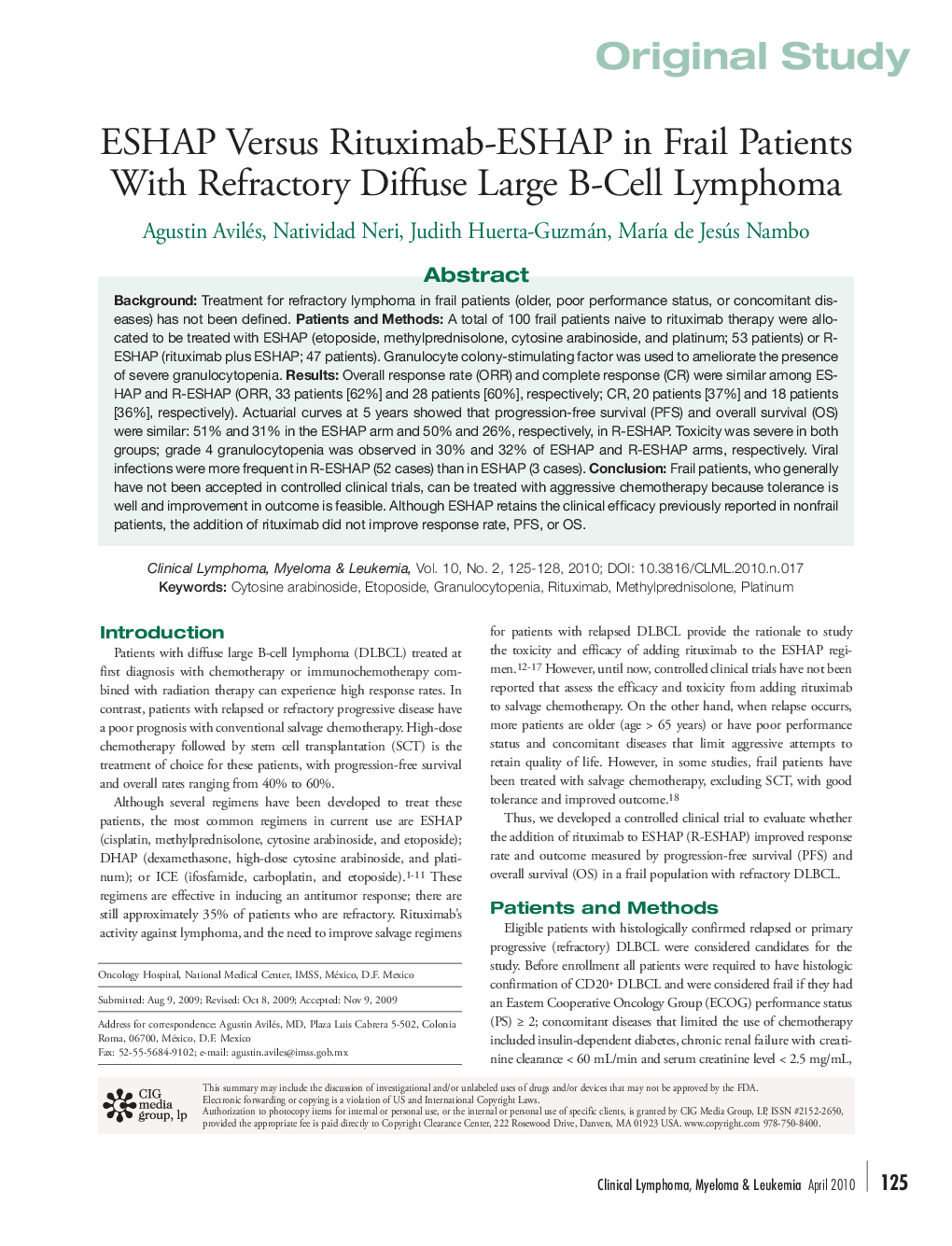| Article ID | Journal | Published Year | Pages | File Type |
|---|---|---|---|---|
| 2755419 | Clinical Lymphoma Myeloma and Leukemia | 2010 | 4 Pages |
Background:Treatment for refractory lymphoma in frail patients (older, poor performance status, or concomitant diseases) has not been defined.Patients and Methods:A total of 100 frail patients naive to rituximab therapy were allocated to be treated with ESHAP (etoposide, methylprednisolone, cytosine arabinoside, and platinum; 53 patients) or R-ESHAP (rituximab plus ESHAP; 47 patients). Granulocyte colony-stimulating factor was used to ameliorate the presence of severe granulocytopenia.Results:Overall response rate (ORR) and complete response (CR) were similar among ESHAP and R-ESHAP (ORR, 33 patients [62%] and 28 patients [60%], respectively; CR, 20 patients [37%] and 18 patients [36%], respectively). Actuarial curves at 5 years showed that progression-free survival (PFS) and overall survival (OS) were similar: 51% and 31% in the ESHAP arm and 50% and 26%, respectively, in R-ESHAP. Toxicity was severe in both groups; grade 4 granulocytopenia was observed in 30% and 32% of ESHAP and R-ESHAP arms, respectively. Viral infections were more frequent in R-ESHAP (52 cases) than in ESHAP (3 cases).Conclusion:Frail patients, who generally have not been accepted in controlled clinical trials, can be treated with aggressive chemotherapy because tolerance is well and improvement in outcome is feasible. Although ESHAP retains the clinical efficacy previously reported in nonfrail patients, the addition of rituximab did not improve response rate, PFS, or OS.
